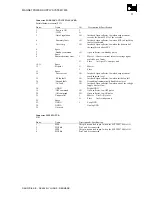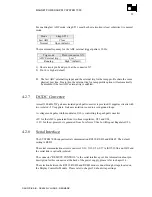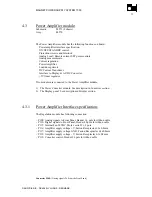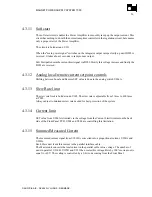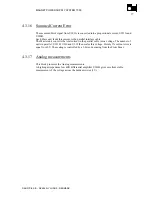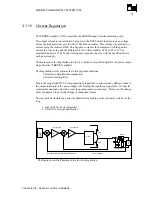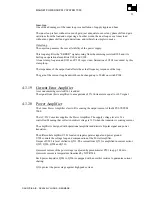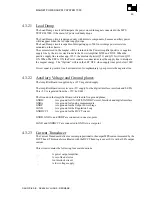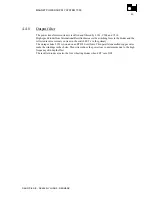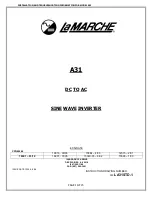
MAGNET POWER SUPPLY SYSTEM 7000
39
DANFYSIK A/S - DK 4040 JYLLINGE - DENMARK.
Inner loop
One of the advantages of the inner loop is cancellation of supply ripple and hum.
The inner loop is fast, without too much gain, just adequate to cancel any phase shift and gain
variations from the load and output stage. In other words, the next loop sees a linear load
without any phase shift and gain deviations, and is therefore simpler to make.
Outer loop
The outer loop ensures the over all stability of the power supply.
This loop amplifies the “ERROR" signal coming from the summing resistor R304 and it is
built upon operational amplifiers U301 and U302.
A local clamp loop around U301 and U302 is provided. Saturation of U302 is avoided, by this
clamp loop.
The impedance of the output load affects the actual frequency response of the loop.
The gain of the current loop bandwidth can be changed up to 20 dB on switch P304.
4.3.19
Current Error Amplifier
A second summing resistor R361 is added.
The signal from this is amplified to a magnitude of 2% Current error equal to ±10V signal.
4.3.20
Power Amplifier
The Linear Power Amplifier class A/B is souring the output current of the MPS SYSTEM
7000.
The AC/DC Converter supplies the Power Amplifier. The supply voltage level is Vce
controlled. Meaning that collector-emitter voltage is 10V when the transistor is souring current.
The amplifier is designed with operational amplifier and discrete bipolar signal and power
transistors.
The differential amplifier U501 located in input separates signal and power ground.
U502 controls the voltage loop and compensation of the Power Amplifier.
Output of U502 is level shifted in Q513. The current from Q513 is amplified in current mirror
Q507, Q509, Q508 and Q510.
Quiescent current of the power stage is adjusted by potentiometer P503 to app. 100 mA.
Quiescent current is temperature linearised by NTC R544.
Each power transistor Q501 to Q506 is equipped with an emitter resistor to guarantee current
sharing.
Q516 protect the power stage against high peak current.

